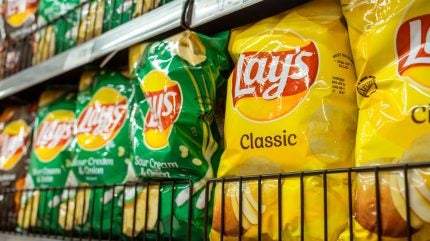
PepsiCo has halted production at a Frito-Lay processing plant in southern California after five decades of operations.
In a brief statement, PepsiCo confirmed the end of manufacturing operations at its Rancho Cucamonga facility.

Discover B2B Marketing That Performs
Combine business intelligence and editorial excellence to reach engaged professionals across 36 leading media platforms.
However, warehouse, distribution and transport teams will continue to operate at the site.
“We are truly grateful for all the support over the last five decades from our Rancho Cucamonga manufacturing team as well as the local community. We are committed to supporting those impacted through this transition and we are offering pay and benefits to impacted employees,” the owner of Lay’s potato chips-maker added.
PepsiCo did not disclose the number of employees affected by the decision nor the specific products manufactured at the site.
It remains unclear whether production will be shifted to other facilities or removed from the network.

US Tariffs are shifting - will you react or anticipate?
Don’t let policy changes catch you off guard. Stay proactive with real-time data and expert analysis.
By GlobalDataPepsiCo operates more than 30 Frito-Lay manufacturing plants across the US, also producing brands such as Cheetos, Doritos and Fritos.
Earlier this year, the company closed a Frito-Lay plant in Liberty, New York, resulting in 287 staff being laid off.
In May last year, PepsiCo reduced the workforce by one-third at a facility in Middletown, New York.
In the first quarter ending 22 March, PepsiCo Foods North America, which includes Frito-Lay and Quaker Foods, generated net revenue of $6.21bn, a 2% decline from the same period in 2024.
It accounted for approximately 34.7% of PepsiCo’s total net revenue of $17.91bn.
In the management commentary released alongside the results in April, top PepsiCo executives said its savoury snack performance, primarily Frito-Lay, remained “subdued”.
The company intends to prioritise “disciplined commercial initiatives” in North America.
For PepsiCo’s North American food division, these efforts involve “optimising and right-sizing” the supply chain and market delivery network, “increasing transportation and logistics efficiencies” and “tightly managing” operational expenses throughout the value chain.





